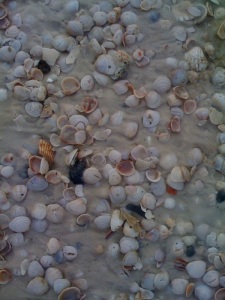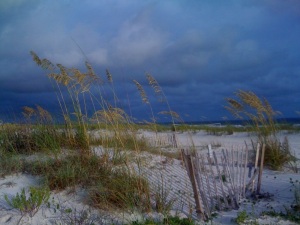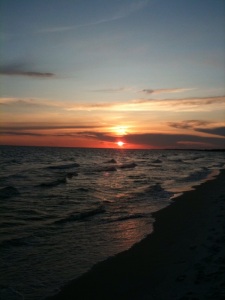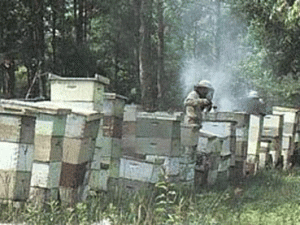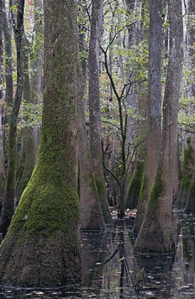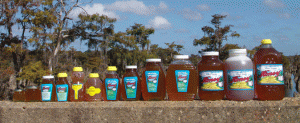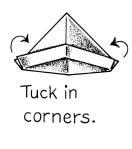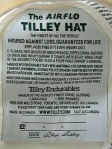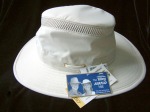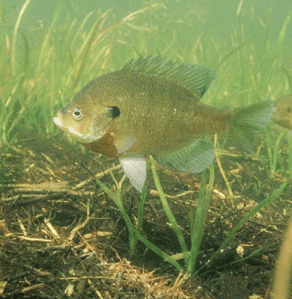After more than a decade, this memory lingers…
It was another day in Paradise. My daughter and her boyfriend, my grandson Lee, my better half and I were enjoying a fine sunny time on Alabama’s Gulf Coast.

Better Half and I were dressed for dinner – bermuda shorts, polo shirts and Sperry Docksiders. Our attire was nearly identical, after all, we go steady. We were plopped in beach chairs, marveling over the indescribable grandeur of the Gulf of Mexico. Behind us, about one hundred yards of sparkling quartz sand spanned the distance between the water’s edge and the beach house, where Daughter and Boyfriend were transitioning from soggy sandy beachwear to Tommy Bahama tropical wear.
Four-year old grandson, Lee, was unwilling to call it a day and pleaded with his mother to allow him a little longer to roll in the soft cool  sand and play with his boogie board in the gentle breakers of the Gulf. Better Half and I were assigned to be on the qui vive, since we werealready on the beach enjoying the golden hour views.
sand and play with his boogie board in the gentle breakers of the Gulf. Better Half and I were assigned to be on the qui vive, since we werealready on the beach enjoying the golden hour views.
Our dear friend Weepy, a long time beach-front resident of the Gulf coast, knows weather and her forecasts have been proven to be correct many, many times. She often says, “When you are on the Gulf and you don’t like the weather, wait 15 minutes and it will change.”
I was reminded of Weepy’s weather wisdom when I noticed the golden hour had changed to a rather overcast hour. I looked in the direction where Lee was playing along the shoreline.
 Startled, I saw the small lad was a bit too far out in the water. The waves had gained some energy and Lee was bobbing in the swell like a sea gull. I yelled and waved at him to come back. Lee kept bobbing. Not wanting to be an alarmist (I have been accused of being excessively overprotective), I asked Better Half, “Does it look like Lee is drifting further out in the water?”
Startled, I saw the small lad was a bit too far out in the water. The waves had gained some energy and Lee was bobbing in the swell like a sea gull. I yelled and waved at him to come back. Lee kept bobbing. Not wanting to be an alarmist (I have been accused of being excessively overprotective), I asked Better Half, “Does it look like Lee is drifting further out in the water?”
Her one word reply – yes – was scarcely spoken before I kicked off my shoes and headed for the surf. By this time Lee was drifting farther east and south of where we were sitting. Wild and frantic, I plunged into the water, trying to reach him. I knew the only thing keeping him above water was the little boogie board attached by rope to his wrist – a ridiculous substitute for a proper personal flotation device.
Unable to swim because I skipped swim lessons as a kid, I hopped and dog-paddled toward the diminishing sight of Lee. Fully clothed, out of breath, crying and chest pounding, I began to doubt if I could complete the rescue. Since that scenario was unthinkable, I stayed the course, hampered by my clothes now heavy with water and by the notion that I was most likely having a heart attack right there in the good ole Gulf of Mexico.
Fixed on Lee’s ever distant position, I was startled when I heard a deep voice behind me, “Joy, what’s going on?”
It was Boyfriend! Tall, young, strong, and able to swim, he quickly reached Lee and carried him back to solid ground, reaching landfall before I did. Everyone was gathered around Lee – Daughter, Boyfriend, Better Half and finally yours truly, soaking wet head to toe and looking worse than bedraggled. Better Half handed me my eyeglasses, which apparently I had let fly along with my shoes eons ago.
Everyone was smiling and two of us were crying a little too. After Lee coughed up all the salt water he swallowed during the ordeal, he wanted to know if he could go and play in the surf again. “Maybe tomorrow,” his mother answered.
The remainder of our vacation was as pleasant as it always is on the Gulf Coast – despite weather changes and near drownings. We  enjoyed late breakfasts, good books and card games during rainy periods. When the sun graced us with her bright light, warmth and harmful UV rays, we made our way to the beach, loaded down with coolers, chairs, snacks, towels, binoculars, shell, fish and bird field guides, fishing gear and bait, hats, a radio and and a few toys for Lee too.
enjoyed late breakfasts, good books and card games during rainy periods. When the sun graced us with her bright light, warmth and harmful UV rays, we made our way to the beach, loaded down with coolers, chairs, snacks, towels, binoculars, shell, fish and bird field guides, fishing gear and bait, hats, a radio and and a few toys for Lee too.
We never took our eyes off of Lee – sporting his new life vest – as he played in the water near the shore. One afternoon, Lee and I were building the umpteenth sand castle of the week. I couldn’t forget the sight of him tossing about in the tide and after the rescue being so dispassionate about the event.
My profound curiosity about Lee’s experience of being alone in choppy seas led me to ask a question. “Lee. What where you thinking about when you drifted out so far into the water and couldn’t get back to shore?”
So young, confident and trusting was he that little boy replied, “I was thinking: I wonder when somebody is going to come and save me.”
I believe most women who are old enough to have grandchildren can look back at their lives as well as contemplate the present and realize just how many lives they have tried to save, to bail out or liberate.
I have done my share of attempted rescues. I have come to the aid of family and friends to free them from poor grades and poor choices, from health issues and economic woes, from drug and other addictions, from loneliness, fearfulness and defeat. My family and friends have done the same for me – sometimes successfully, but often not. Heaven knows I’ve needed to be rescued on more than a few occasions.
Even now I would dive into the deep to save Lee’s life. Be that as it may, it’s much more likely that the now tall, strong, fifteen-year-old Lee would play the role of life guard and I the role of grandmama who never learned to swim.
We are given opportunities to help others along our path and we do. But can we truly take responsibility for someone else’s life? Do we have the capacity to deliver others from challenges they face? If our efforts to save others become overwhelming, then what?
Mary Oliver, Pulitzer Prize winner and one of my favorite poets wrote “The Journey”, a poem that offers her wisdom to the would-be saviors and those waiting to be saved.
The Journey
One day you finally knew
what you had to do, and began,
though the voices around you
kept shouting
their bad advice–
though the whole house
began to tremble
and you felt the old tug
at your ankles.
“Mend my life!”
each voice cried.
But you didn’t stop.
You knew what you had to do,
though the wind pried
with its stiff fingers
at the very foundations,
though their melancholy
was terrible.
It was already late
enough, and a wild night,
and the road full of fallen
branches and stones.
But little by little,
as you left their voices behind,
the stars began to burn
through the sheets of clouds,
and there was a new voice
which you slowly
recognized as your own,
that kept you company
as you strode deeper and deeper
into the world,
determined to do
the only thing you could do–
determined to save
the only life you could save.















